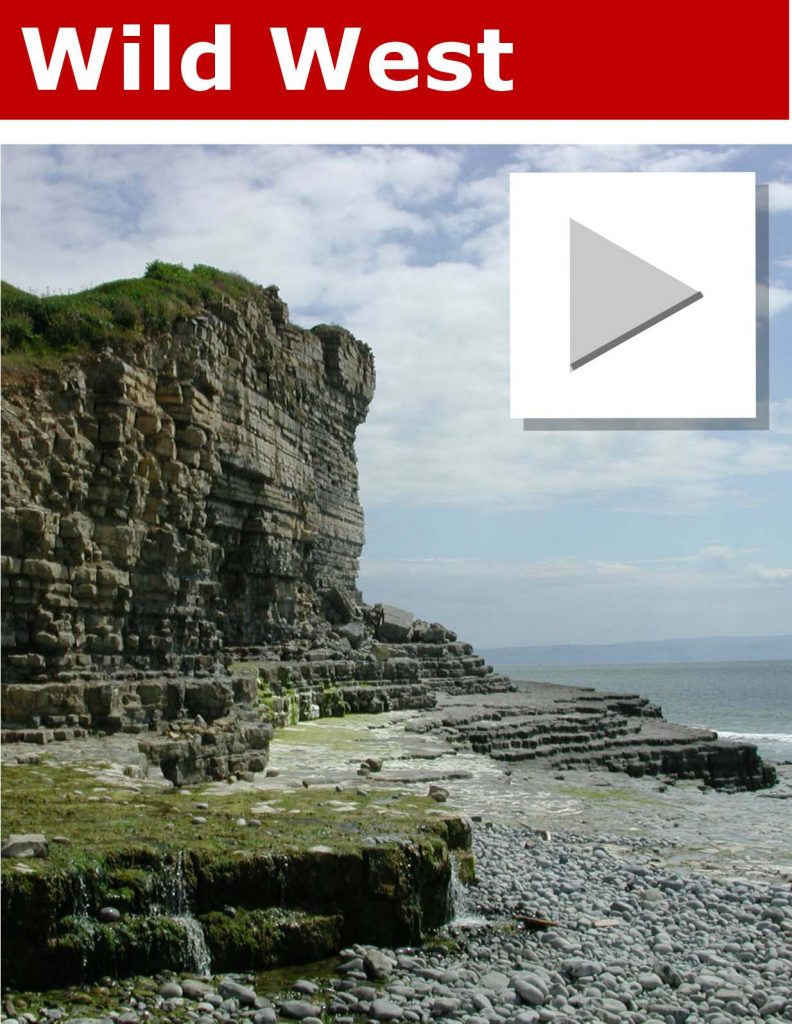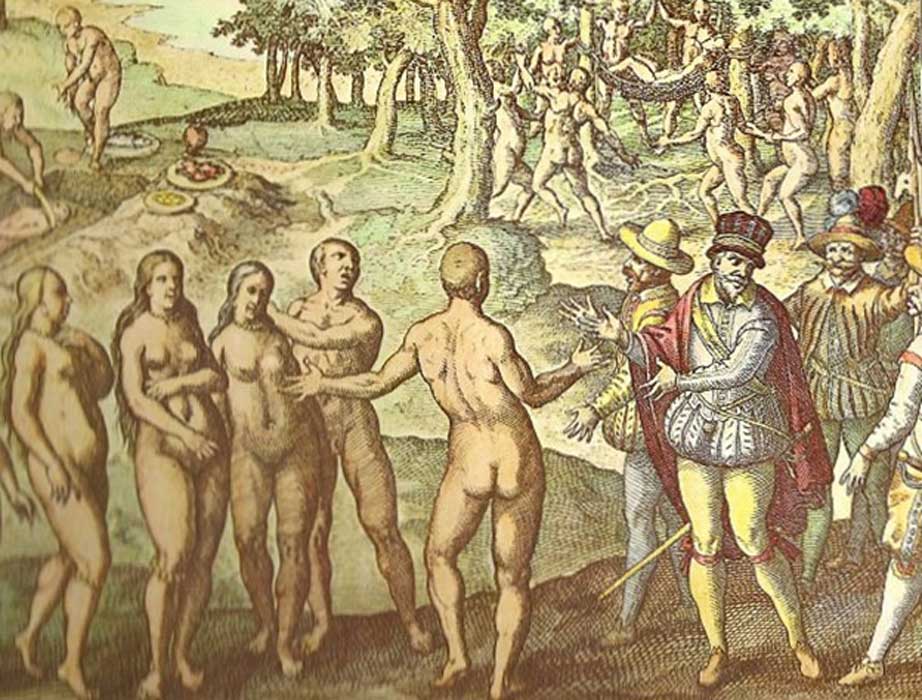
Did a Welsh Prince Reach the New World Before Columbus?
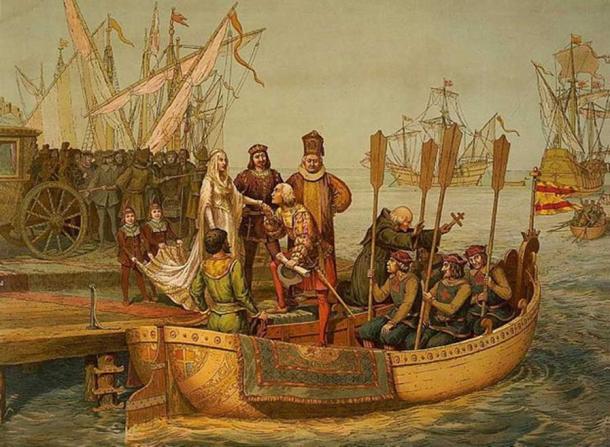
The Italian explorer Christopher Columbus (1451-1506 AD) has already been dethroned as the European discoverer of the Americas. Most historians now agree that the first known Europeans in the New World were the Vikings led by Leif Erikson around 1000 AD. There is, however, another European who is also claimed to have reached the New World before 1492, the Welsh Prince Madoc (Madog). He is said to have gone to the New World with a fleet of ships between the years 1170 and 1171 AD. It has also been suggested that several Native American tribes may be descended from the members of his expedition. No conclusive evidence has been found for this idea so far, but it is an intriguing possibility.
‘The First Voyage’ Christopher Columbus bidding farewell to the Queen of Spain on his departure for the New World, August 3, 1492. ( )
https://www.visitwales.com/explore/north-wales/north-wales-coastal-attractions
The Prince Madoc Story
The story of Madoc originated in a 15th century poem. According to the poem, Madoc was the son of the historical Welsh king Owain of Gwynedd. Owain had thirteen legitimate children and a number of illegitimate children. Madoc was an illegitimate son. He was born around 1145 AD.
In 1170, when the king died, a dispute among his sons arose over who would be the next king. This led to a civil war. Madoc was a man of peace and had no taste for violence, so he and his brother Riryd left with two ships sailing west and eventually reached what is now called North America, landing in Mobile Bay, Alabama. They returned to Wales in 1171 to tell of their adventures and to gather recruits to establish a new kingdom across the sea. One hundred men, women, and children left with Prince Madoc never to return.D
https://www.visitwales.com/americas
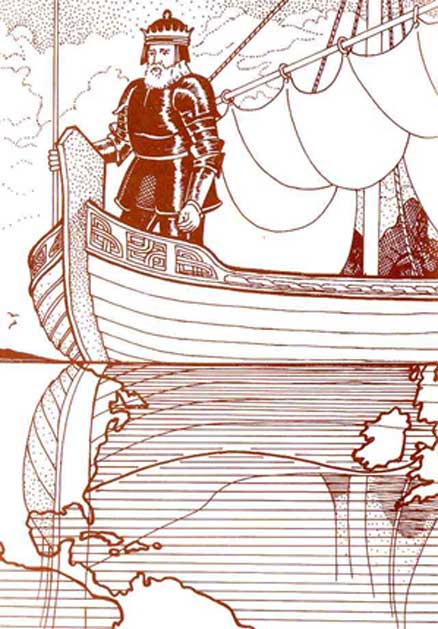
Imaginative drawing Madog ab Owain Gwynedd on his ship. ( Bay of Colwyn Cygnor Tref – Town Council )
A Welsh Presence in the Americas?
There is no mention of Prince Madoc in the annals of the 12th century, let alone any evidence of his landing in Mobile Bay, but this legend nonetheless remained a popular story into the Age of Exploration. It was even used by John Dee, an agent of Queen Elizabeth, to argue that the English had a rightful claim to territory in the New World over France and Spain. John Dee even went as far as to say that King Arthur and Brutus of Troy, the legendary first king of the Britons, had both established a British presence in the New World, further consolidating the English claim to the Americas.
During the 18th and 19th centuries, many Native American tribes were believed by European explorers to be descended from Welsh colonists led by Prince Madoc. Some explorers even believed that the Maya and Inca civilizations were connected to the Welsh Prince. The same was said of the mound-building civilizations of the eastern United States. Furthermore, when the first Mormon settlers came to Utah, they were so convinced that the Hopi and Zuni tribes were of Welsh descent that they sent people who knew Welsh to the tribes to identify any Welsh speakers. None were found. The tribe most commonly identified as possibly being descended or partially descended from Welsh settlers are the Mandan. The Mandan were a tribe that originally lived along the Missouri River. Their descendants mostly live in North and South Dakota today.
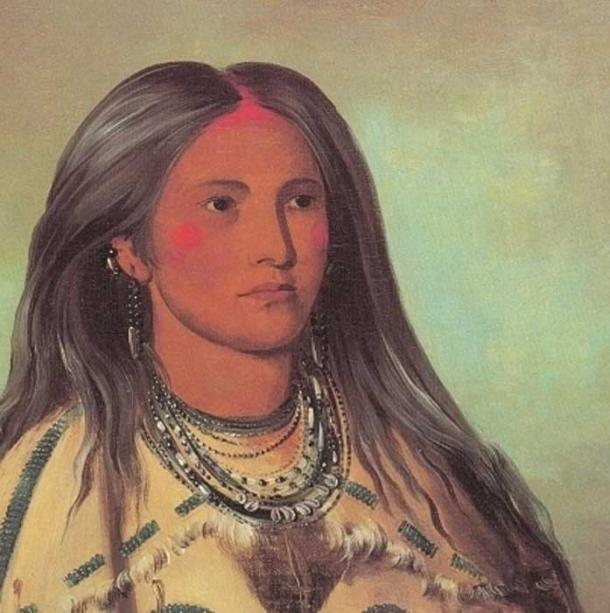
Shakoka, A pretty Mandan Girl, George Catlin 1832. ( Public Domain )
Many Europeans who encountered the Mandan including the artist George Catlin believed them to be of European decent. This was mainly because of their relatively light colored skin and the fact that their hair turned grey as they aged, which was not the case for most of the surrounding tribes. Other European explorers claimed that their language was very similar to Welsh and that, unlike the surrounding Native American groups, they had advanced architecture such as stone forts as well as permanent towns and villages with planned streets.
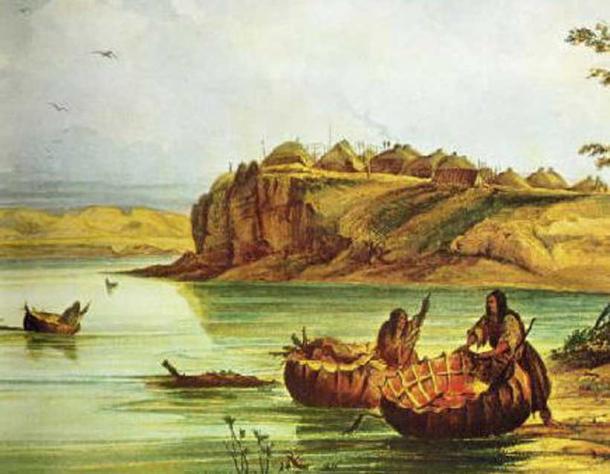
Mandan Bull Boats and Lodges by Karl Bodmer. ( Public Domain ) Some have suggested the Mandan bull boat to be similar to the Welsh coracle.
There were also stories of White Indians who had blond hair and blue eyes which were wiped out by surrounding non-white tribes in a battle near the falls of the Ohio River. This story became incorporated into the Madoc legend as the settlers in the falls area identified the White Indians with descendants of the Welsh expedition
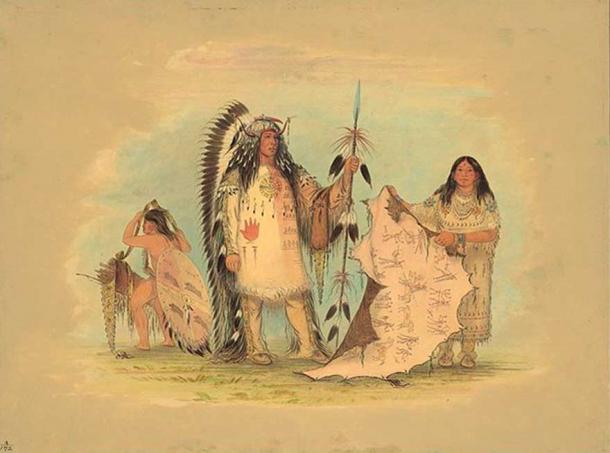
Mandan War Chief with His Favorite Wife (Catlin 1861-69) ( Public Domain )
More than a Legend?
Is there any archaeological or historical evidence for this idea? There are earthen mounds at Devil’s Backbone which have been attributed to descendants of Welsh settlers in the past. There was also reportedly a mass grave nearby where the battle between the White Indians and the other tribes was said to have happened. Believers in the legend asserted that it was the burial ground of those who had died in the battle.
Additionally, there is a story of a discovery in Jeffersonville, Indiana of several skeletons that were buried while wearing brass armor. Most of these claims are unverifiable since the evidence is not available for analysis. The mass-grave mentioned by early settlers has apparently been washed away by the river (if it ever truly existed) and the armor has disappeared as well. Furthermore, most contemporary linguists do not believe that the Mandan language is similar to Welsh other than a few words.A
Attributing the earthen mounds found at places across the northeastern United States including Devil’s Backbone to a mysterious, vanished white tribe or civilization was very common in the 19th century. It was common even in professional archaeological and anthropological circles. Another example of this tendency was the Book of Mormon which claimed that members of the lost ten tribes of Israel came to the Americas and built a civilization. The early Mormon settlers, as well as some modern Mormons, have attributed the mounds as well as the cities built by the Maya and the Inca to Israelite settlers.
These early theories reflect attempts to reconcile the prevailing Western view of Native Americans at the time as uncivilized savages with evidence for ancient American civilizations with technological sophistication rivaling Europe itself. European scholars knew little about Native American archaeology and their cultural history, so they assumed that the Native Americans could not have built these cities and structures because of their inferior technology. Since then, archaeologists and anthropologists have learned much more about past Native American cultures as well as present ones and it is generally agreed that the Native Americans built the notable archaeological structures predating the arrival of Christopher Columbus.
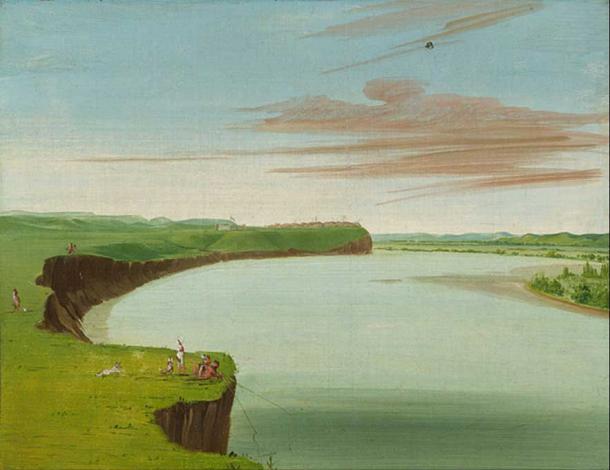
Distant View of the Mandan Village (Catlin, 1832). ( Public Domain )
Linguistic Evidence
Most of the Mandan died in a smallpox epidemic in 1837, but enough did survive that their culture is reasonably well-known. This gives interested investigators an opportunity to study the living culture of the Mandan for Welsh influence.
So far, there doesn’t seem to be much evidence of it. For example, there have been attempts to identify figures in Mandan mythology with Madoc, such as the Lone Man. The Lone Man however bears little resemblance to Madoc. He is a demi-god who was involved in the creation of the world who created the flat lands while the First Creator focused on the highlands. The only thing about the Lone Man which can be connected to Madoc is that he once walked in the primordial sea.
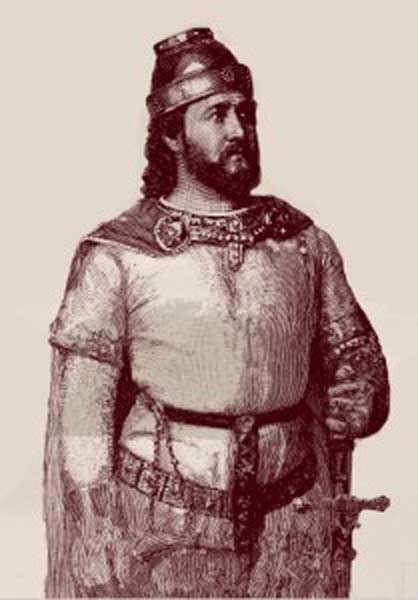
A representation of Prince Madoc. ( Haunted Earth’s Ghost World )
For the time being, the truth of the Welsh Prince Madoc legend remains inconclusive. It is possible that a Welsh contingent did indeed land in the Americas before Columbus, but many things have been wrongly attributed to them, which has harmed the credibility of the legend as historical reality.
Top Image: Amerigo Vespucci meeting fair skinned and blond natives upon his arrival on his first voyage to the New World, 1497. (Theodore de Bry) ( Public Domain )https://www.visitwales.com/




